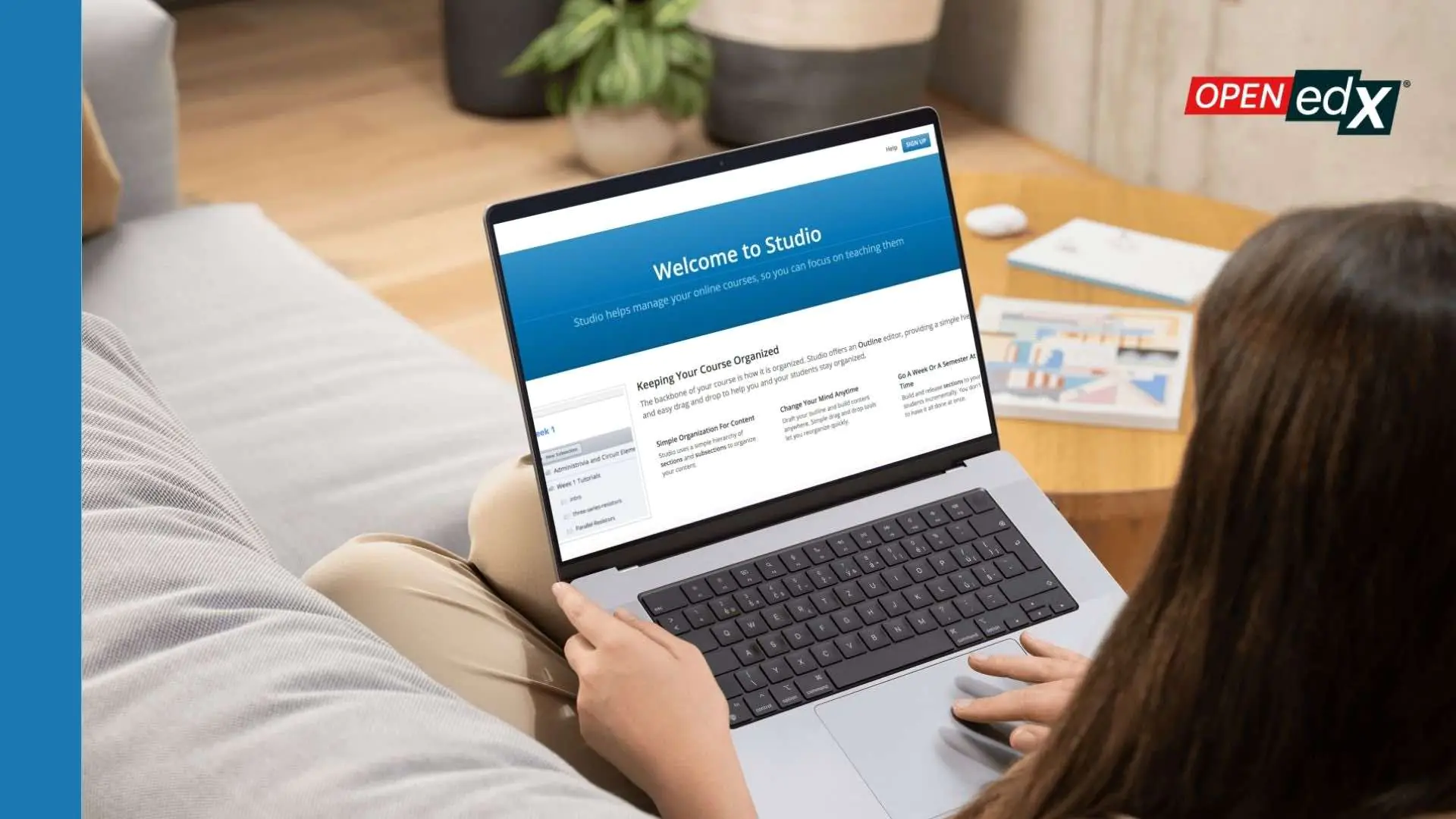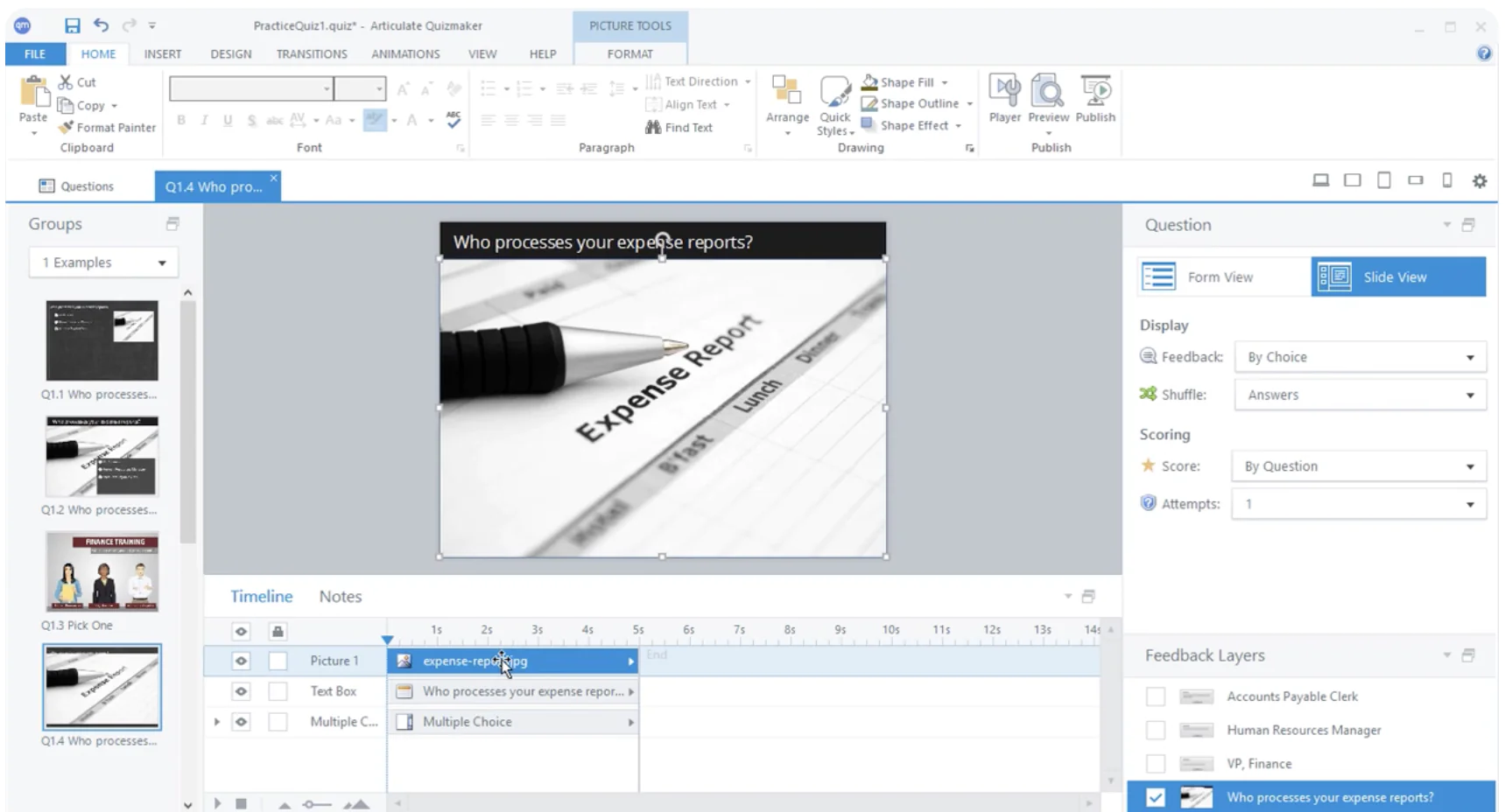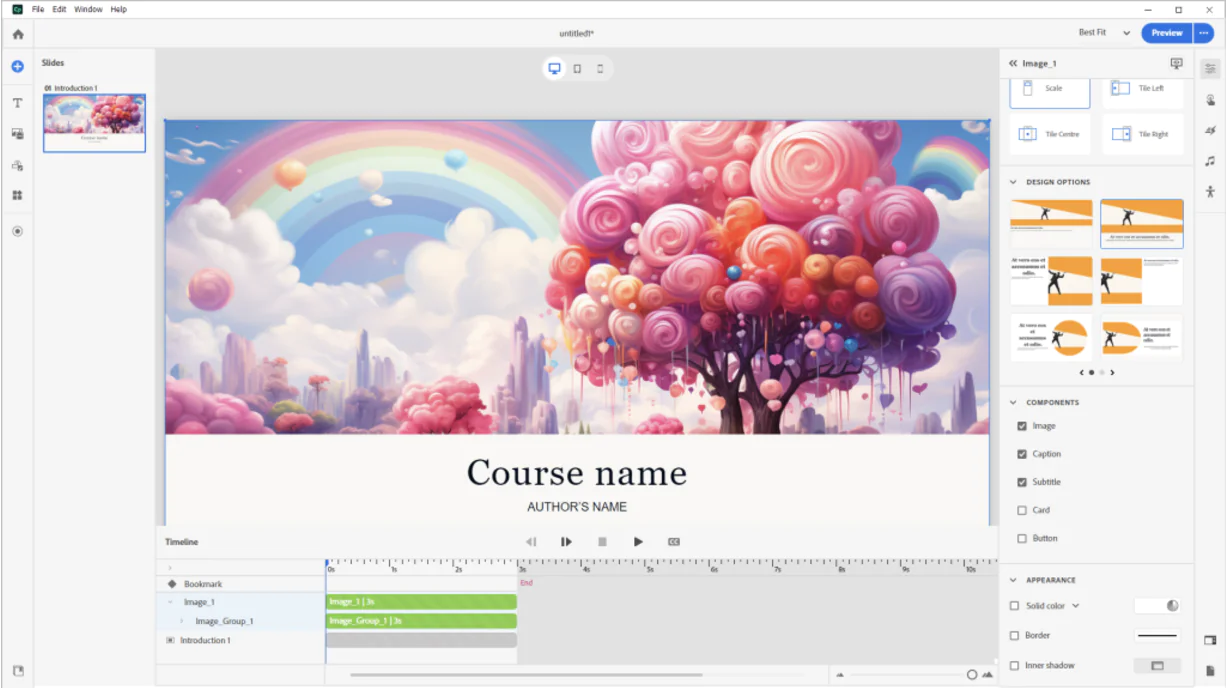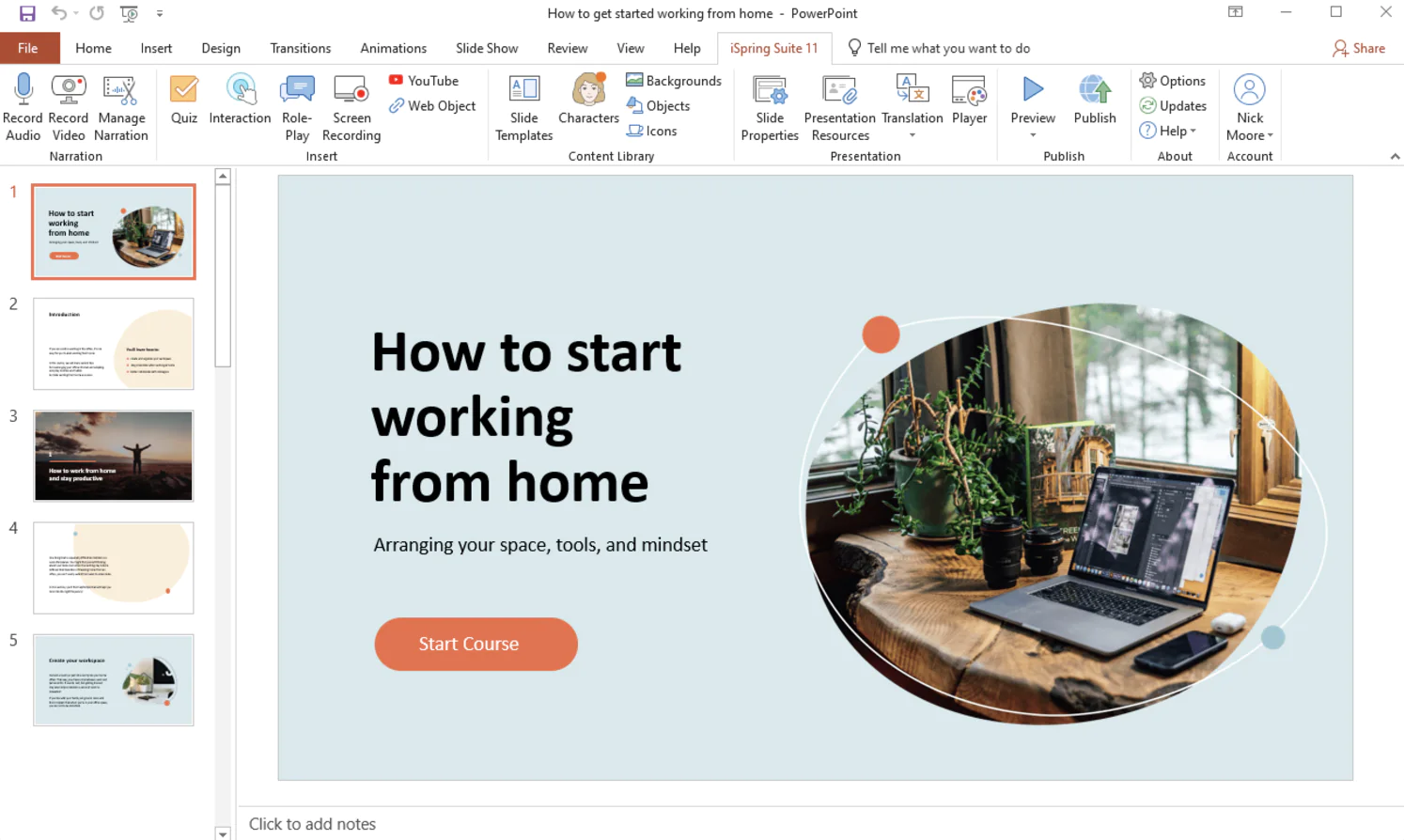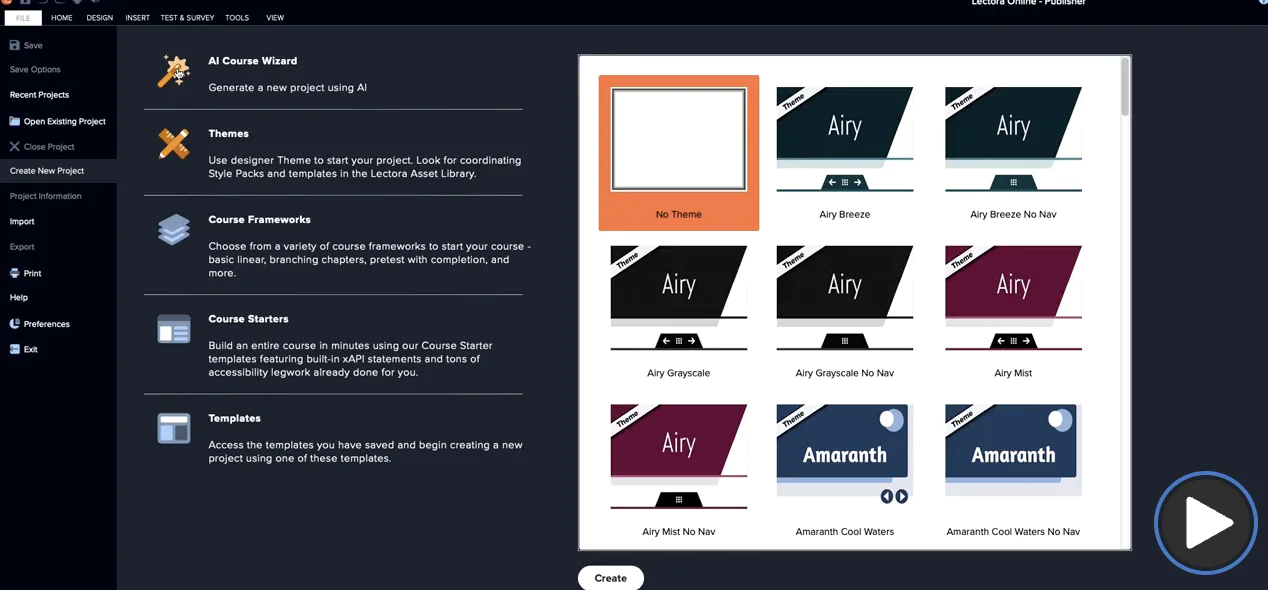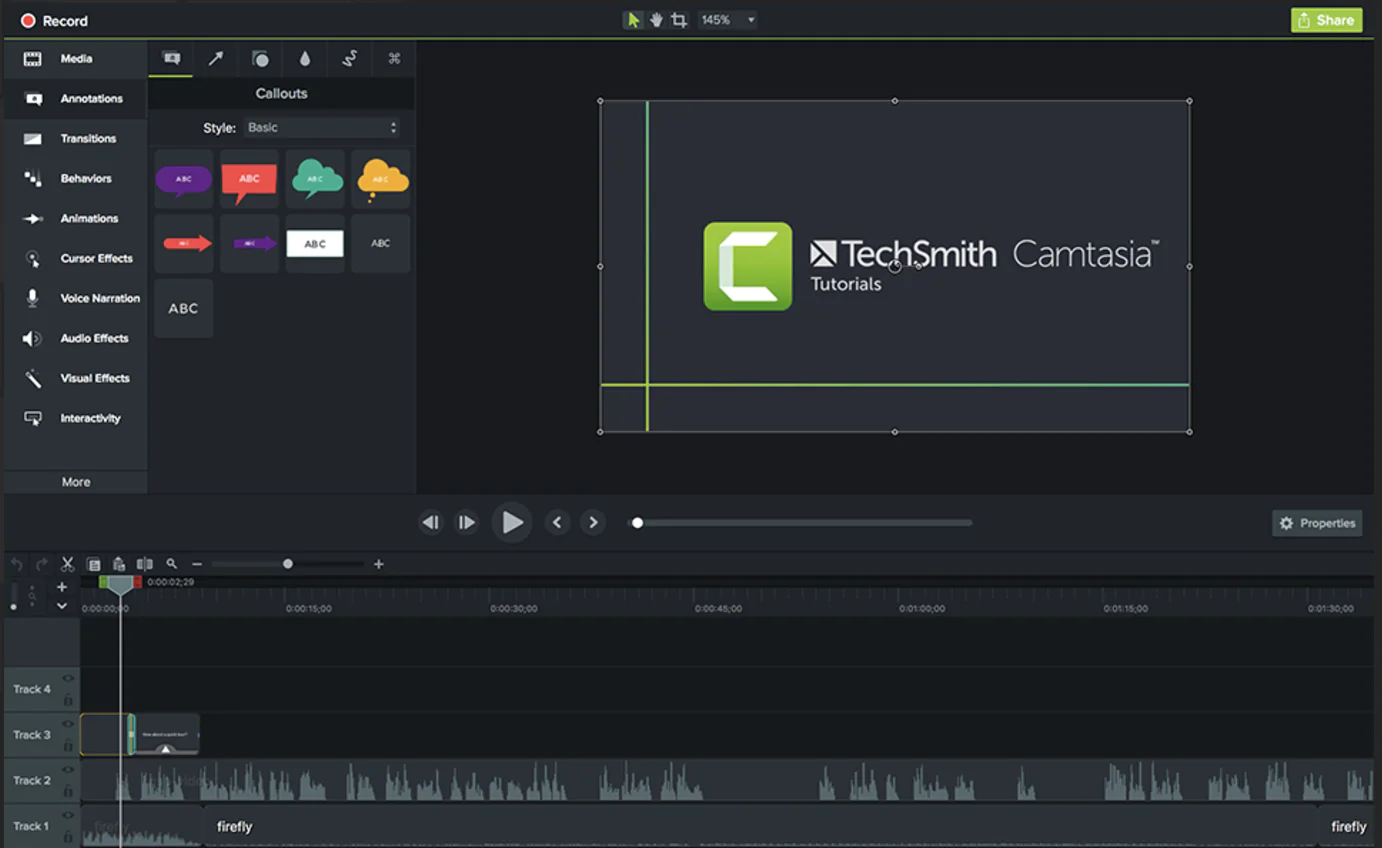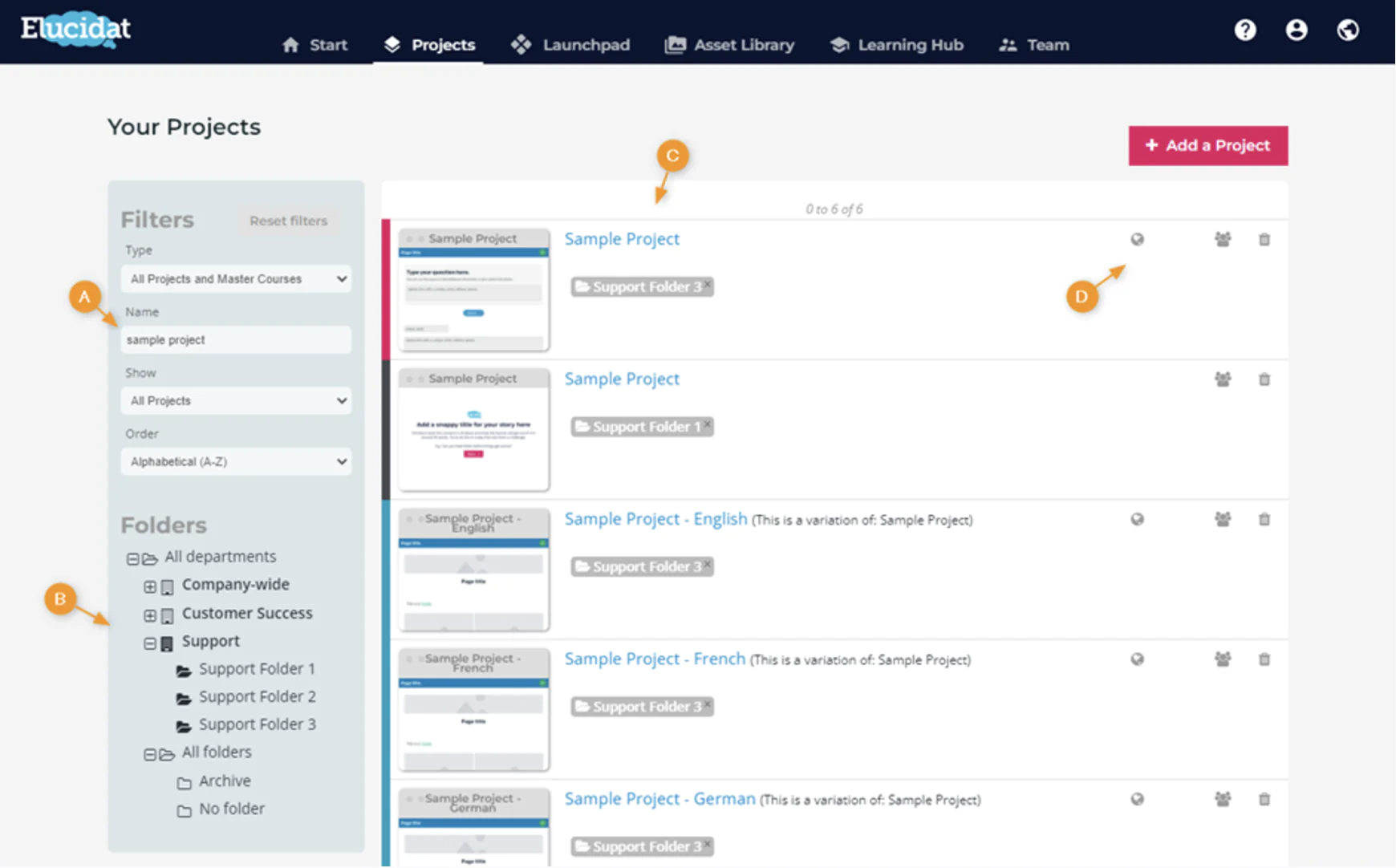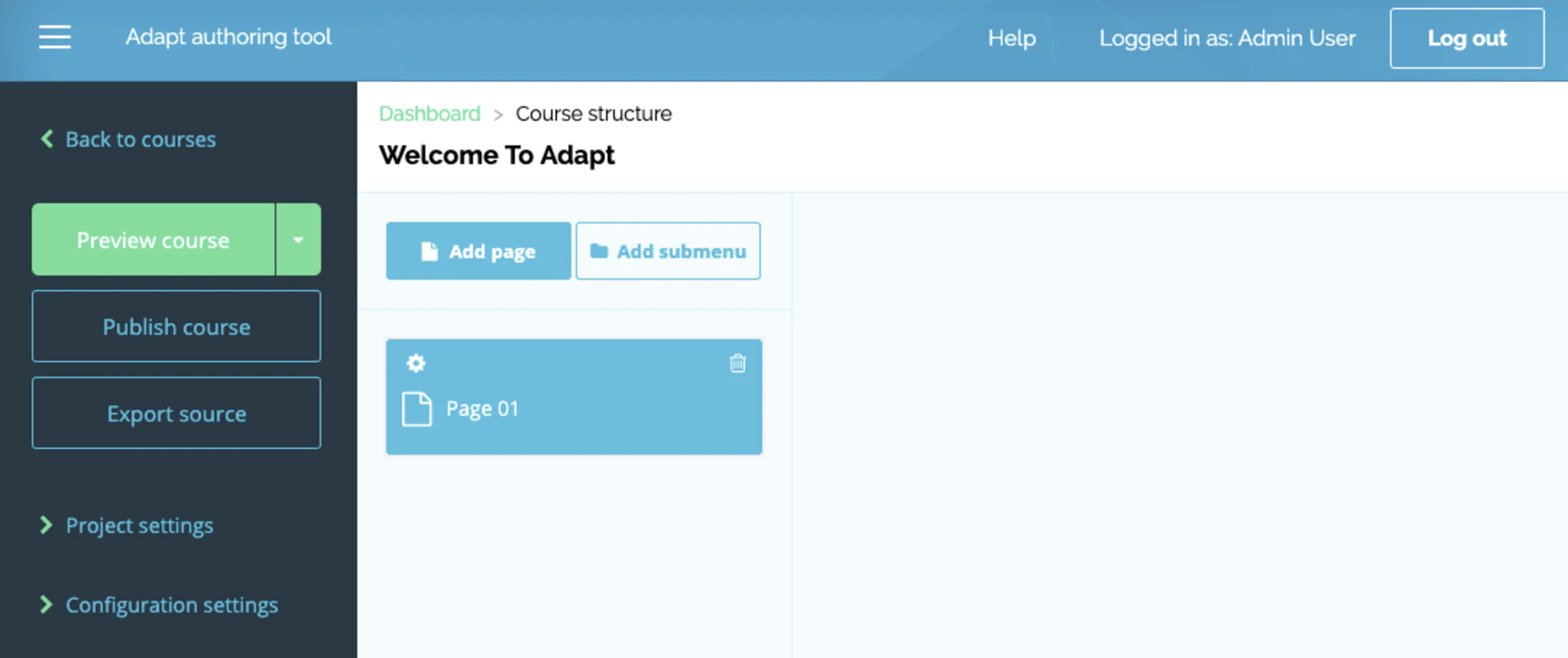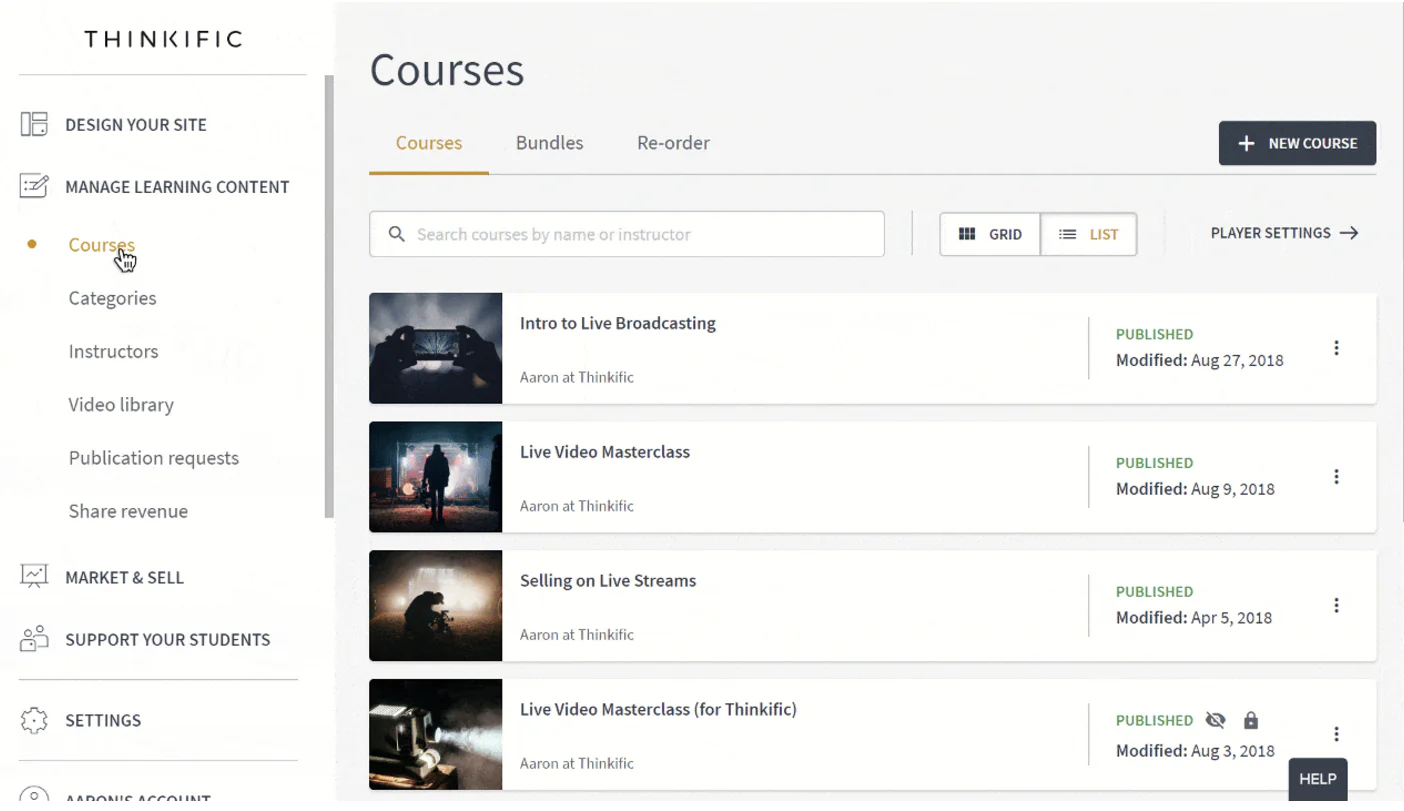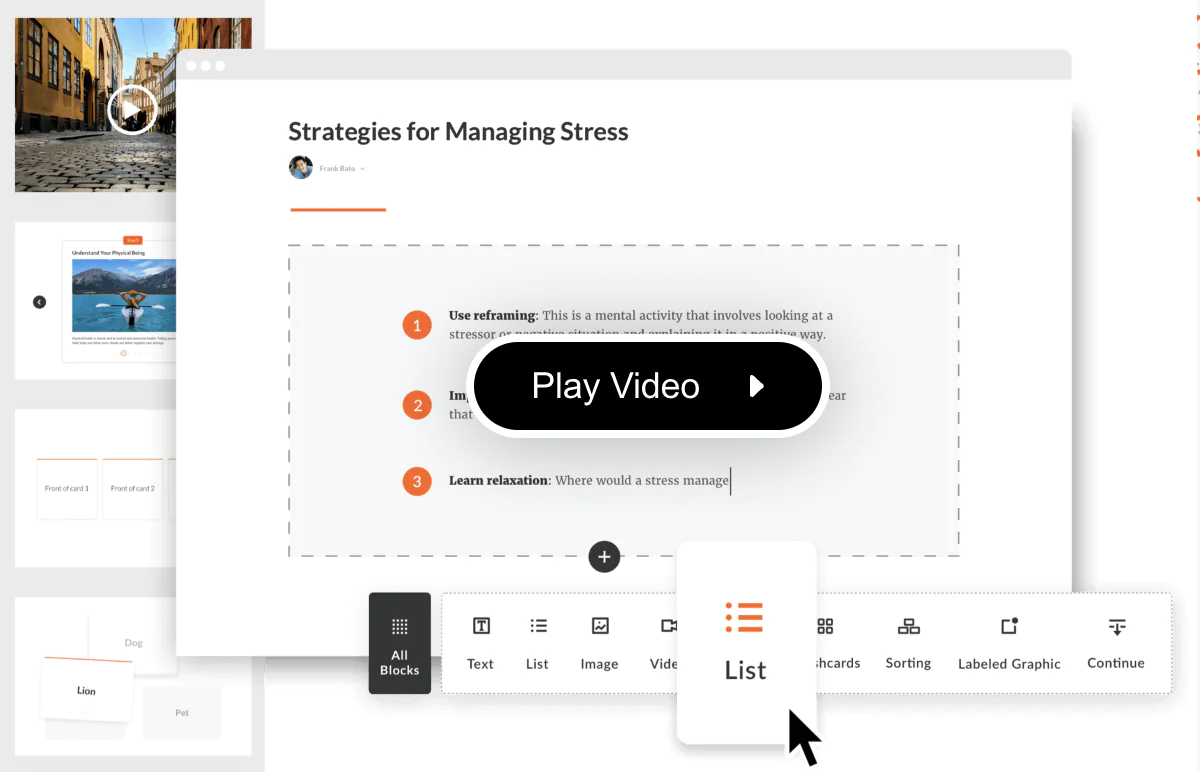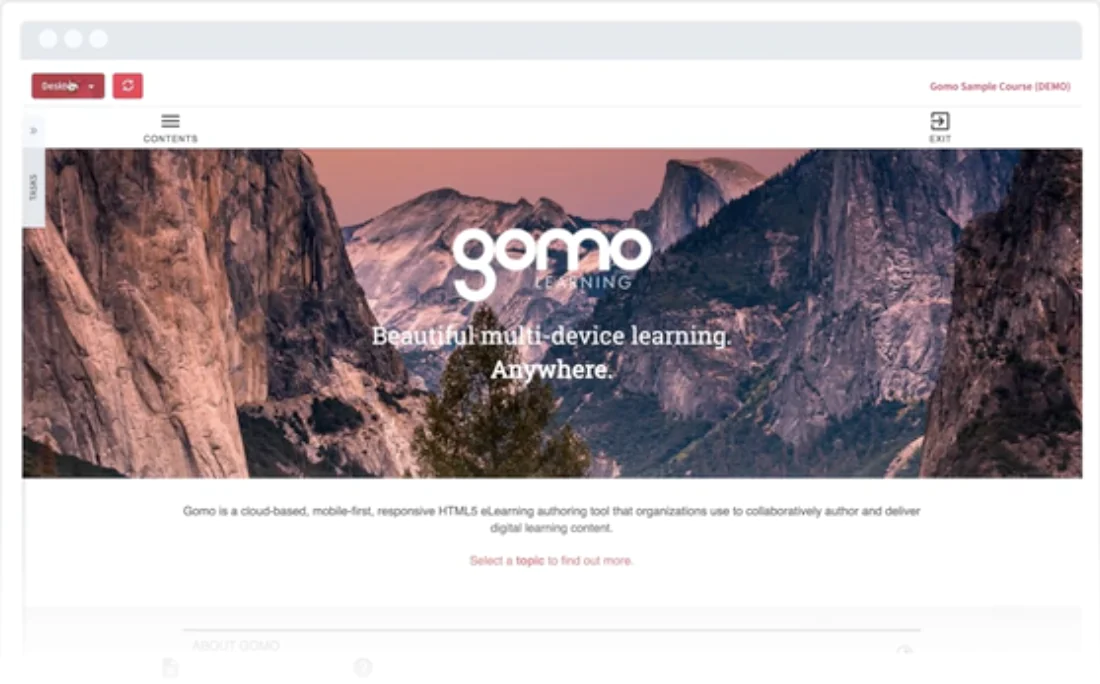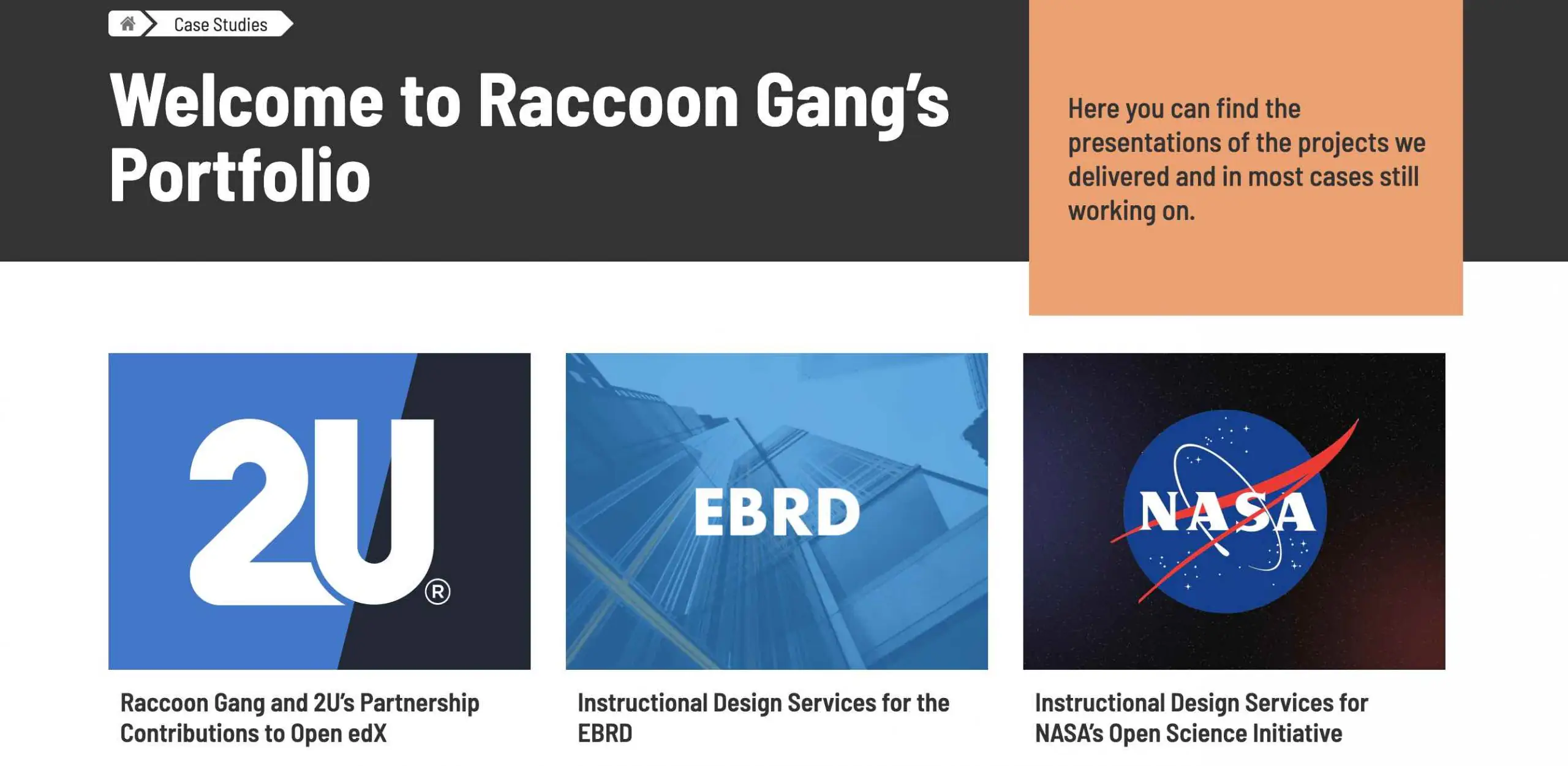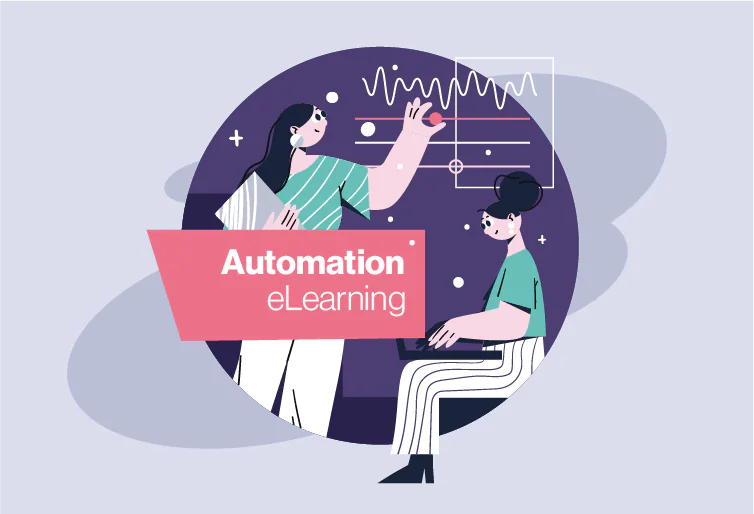What Are eLearning Authoring Tools?
Imagine turning your expertise into an engaging online course with just a few clicks. eLearning authoring tools, including open-source options like Moodle, H5P, and Adapt Framework, make this possible. They’re like digital workshops transforming raw knowledge into professional learning experiences.
“At Raccoon Gang, we know good elearning tools can change how people learn. We help turn old-school training into fun online lessons. Our Open edX platform makes creating courses easy. We help schools and businesses build digital learning that works for their needs”, — Sergiy Movchan, Member of the Board, Raccoon Gang
These smart software platforms break down the complex barriers of course creation. You no longer need to be a programming wizard or a design expert to build compelling online training. Certainly, anyone can become a digital course creator with eLearning authoring tools.
Let’s dive into how these tools work:
| Category | Feature | Details |
| Content Creation | Templates for Quick Start | Pre-designed templates jumpstart course design for specific needs, like compliance training or customer service skills modules. |
| Easy Multimedia Integration | Drag-and-drop functionality allows adding videos, graphics, and audio for engaging learning experiences. | |
| Interactive Elements | Enables creating activities like drag-and-drop tasks, clickable diagrams, and simulations to make learning dynamic and engaging. | |
| Customization | Brand Alignment | Tools allow customization of colors, logos, and designs to reflect your organization’s identity. |
| Tailored Content | Facilitates creating specific content for various teams, departments, or skill levels, ensuring targeted training experiences. | |
| Publishing | Learning Platform Compatibility | Supports standard formats like SCORM and xAPI for smooth integration with most LMS. |
| Multi-Device Accessibility | Ensures courses are optimized for desktops, tablets, and smartphones, providing learners access anywhere. |
While eLearning authoring tools offer capabilities for creating engaging online courses, they’re challenging. Undoubtedly, understanding the pros and cons of eLearning authoring tools can help make smart choices about their digital learning strategies.
Advantages of eLearning Authoring Tools
- Easy content creation: No coding skills? No problem. These tools are designed for everyone, not just tech experts. Drag-and-drop interfaces mean you can build professional courses without writing a single line of code. Imagine creating an entire training program as easily as you’d make a PowerPoint presentation.
- Speed meets quality: Traditional course creation used to take months. However, now you can build comprehensive training in just weeks or even days. This is because templates, pre-built interactions, and intuitive design tools simplify the process significantly. As a result, your expertise can quickly and easily transform into a course like never before.
- Interactive elements that stick: People learn by doing, not just watching. These tools allow you to add drag-and-drop challenges, click-to-reveal interactions, scenario-based learning paths, and gamified progress tracking.
- Update courses in real-time: Business changes fast, and your training should keep up. With these tools, updating a course is as simple as editing a document. You can add new information, remove outdated content, or adjust based on feedback—all without starting from scratch.
- Scale learning across your organization: These tools make it seamless whether you’re training ten people or 10,000. Create a course once, deploy it everywhere, and consistency becomes your superpower.
- Cut external development costs: Hiring instructional designers and developers is expensive. These tools let your existing team create professional training. Every course you build in-house saves thousands of dollars.
- Break down learning barriers: Modern authoring tools ensure your training reaches everyone (closed captions for videos, screen reader compatibility, mobile-friendly designs, adjustable text sizes, color-blind friendly interfaces).
Challenges to Navigate
- Mastering your tool: Mastering a new eLearning authoring tool takes time and patience. You’ll need to invest effort in understanding interfaces, exploring features, and potentially attending workshops. The initial complexity can be challenging, but persistence pays off.
- Weighing the investment: Premium eLearning tools come with significant costs. Subscription models and upfront expenses require careful financial planning. Consider pricing tiers and potential long-term savings against the initial investment.
- Template limitations: Pre-designed templates offer convenience but can feel restrictive. These tools often provide generic layouts that might make your courses look similar to others. Creativity can feel constrained by predefined design options.
- Navigating potential hurdles: Expect potential challenges, such as LMS compatibility issues, the need for technical support, and staying current with software updates. A proactive approach helps manage these technical complexities.
While eLearning authoring tools break down complex course creation barriers, they ultimately empower professionals to transform knowledge into engaging digital training experiences. Moreover, despite some challenges in learning and implementation, these tools provide accessible solutions for creating interactive learning content.
Key Features of Effective eLearning Authoring Tools
The effectiveness of digital learning depends on the right authoring tools. eLearning authoring software enables instructional designers to create engaging and accessible content.
Key features that distinguish these platforms include
| Feature | What It Does | Example | Why It Matters |
| User-Friendly Interface | Simplifies course creation with drag-and-drop tools and visual editors. | Articulate 360 and Adobe Captivate let users create courses without coding expertise. | Saves time and empowers non-technical users to produce professional-quality content. |
| Multimedia Integration | Makes adding videos, audio, images, and animations straightforward. | Embedding a training video in a compliance module or adding an audio guide to tutorials. | Enhances engagement and simplifies the explanation of complex concepts. |
| Interactivity and Assessments | Adds quizzes, drag-and-drop tasks, and branching scenarios for active learning. | A simulation for customer service that teaches learners to handle challenging conversations. | Keeps learners engaged and improves retention through interactive, hands-on content. |
| Responsive Design | Ensures courses adjust automatically to different devices (phones, tablets, desktops). | A leadership course that looks perfect on both smartphones and PCs. | Enables learning on the go, ensuring seamless access across all devices. |
| Template Library | Offers pre-designed course layouts for faster creation. | Ready-to-use onboarding templates with sections for company history and roles. | Saves time and ensures courses look polished and professional. |
| Customization Options | Allows tailoring of logos, colors, and content to align with the organization’s branding. | Adapting a sales training module for beginners versus advanced managers. | Personalized content resonates better with specific learner groups. |
| Collaboration Features | Enables teamwork with real-time feedback and version tracking. | Two designers collaborating simultaneously on a training module using cloud software. | Speeds up content creation while ensuring accuracy through teamwork. |
| SCORM and xAPI Compatibility | Exports courses that are compatible with different Learning Management Systems (LMS). | A safety course built in Rise integrates seamlessly with Moodle LMS. | Simplifies deployment and avoids compatibility issues with existing systems. |
| Cloud-Based Access | Stores project online, allowing access from anywhere with the internet. | A global team collaborating remotely using iSpring Suite. | Facilitates remote work and ensures project security with reliable backups. |
| Analytics and Reporting | Tracks learner engagement, completion rates, and quiz performance. | Pinpointing weak sections in a course based on completion and quiz score analytics. | Improves training outcomes through data-driven refinements. |
| Localization and Multilingual Support | Translates courses for different languages and adapts to cultural contexts. | Converting technical training into Spanish, French, and Mandarin. | Expands training reach, ensuring inclusivity and cultural relevance. |
The right eLearning authoring tool can transform ordinary training into extraordinary learning experiences. By focusing on these key features, organizations can create engaging and practical courses.
Top eLearning Authoring Tools to Digitize Standard Class Activities
Let’s explore top eLearning authoring tools, including their key features and benefits.
1. Open edX Studio
The first example of an authoring tool is the open-source platform Open edX. The platform offers many options by combining LMS functionality with authoring tool elements.
If your area of interest includes creating and delivering interactive courses, if you want to use educational content formats such as videos, quizzes, and discussion forums, Open edX will not disappoint you. All functionality for educators seeking to create educational content on the Open edX platform is in the Studio section.
2. Articulate 360
The comprehensive eLearning toolkit with Rise for responsive content and Storyline for custom interactions. It includes templates, multimedia features, and collaboration tools. The toolkit transforms in-class presentations into interactive modules with quizzes and branching scenarios. Perfect for educators and organizations needing professional-grade course creation. For example, professional associations can create continuing education courses for their members, enhancing their skills and knowledge.
3. Adobe Captivate
Advanced eLearning platform with VR, 360-degree media, and responsive design capabilities. It offers pre-built templates and interactive quizzes. Undoubtedly, it is ideal for enterprises and educators focused on lectures and lab activities with immersive, interactive simulations.
4. iSpring Suite
The PowerPoint-based tool offers drag-and-drop interactivity, multimedia additions, and SCORM-compliant publishing. Besides, it digitizes standard lectures and assessments into professional eLearning formats. Perfect for educators familiar with PowerPoint seeking a clear digital content creation solution.
5. Lectora
The cloud-based platform supports multi-language content with strong accessibility features (WCAG/ADA compliant). Ideal for organizations needing accessible and multilingual training materials. For example, Government Agencies, NGOs and Charities, Educational Institutions, and Training and Development Companies.
6. Camtasia
The tool focused on screen recording and video editing, enabling instructors to create video-based tutorials and demonstrations. It helps you record lectures and enhance them with annotations and interactive elements. So, the tool may be perfect for educators who rely on video-based teaching.
7. Elucidat
The collaborative design tool with pre-built templates, real-time feedback, and analytics for optimizing course engagement. Moreover, it groups projects and peer-based activities into collaborative digital content. Ideal for teams creating training at scale. Finally, it offers a comprehensive solution for all training needs.
8. Adapt Learning
Adapt is an open-source elearning authoring tool designed for creating responsive, HTML5-based courses that work seamlessly across devices. It’s highly flexible, allowing developers and instructional designers to build custom learning experiences tailored to specific needs.
9. Thinkific
The platform merges course creation with eCommerce features for monetization. Also, it offers templates and multimedia support. The platform helps in transforming classroom workshops into sellable online courses. For example, a fitness instructor could create and sell online workout programs, or a chef could offer a series of online cooking classes.
10. Rise
The platform combines open-source eLearning functionality with flexible authoring tools. Presently, offers pre-designed blocks and mobile-responsive content for fast course creation. Ideal for professionals with minimal technical expertise seeking to develop interactive learning materials. For example, a human resources manager can easily create engaging onboarding modules without coding.
11. Gomo Learning
The web tool has a drag-and-drop design, multiple language support, and teamwork features. Certainly, it creates mobile-ready and responsive content. It assists in turning group discussions and projects into interactive, mobile-friendly lessons — great for organizations creating flexible training for global teams.
Quick Comparison: The Best eLearning Authoring Tools
| Tool Name | Best For | Key Strength | Scalability | Ease of Use | Pricing |
| Articulate 360 | Corporate training and compliance courses | Robust interactivity and multimedia | Highly scalable | Beginner-friendly | Subscription-based |
| Adobe Captivate | Advanced multimedia integration | Powerful for interactive simulations | Scalable for complex needs | Steeper learning curve | Perpetual or subscription |
| Rise | Rapid content creation | Template-driven, responsive courses | Moderate scalability | Extremely user-friendly | Subscription included in Articulate 360 |
| Lectora | Multilingual and accessible training | Strong accessibility compliance | Highly scalable | Moderate difficulty | Tiered pricing plans |
| iSpring Suite | Turning PowerPoints into eLearning | Integration with PowerPoint | Ideal for small to mid-scale | Simple to use | Subscription-based |
| Camtasia | Video-based training | Best for creating video tutorials | Limited scalability | Beginner-friendly | Perpetual license |
| Elucidat | Large teams needing collaboration | Cloud-based team collaboration | Highly scalable | User-friendly | Scalable pricing tiers |
| Thinkific | Course creators and online entrepreneurs | User-friendly LMS platform | Moderate scalability | Extremely simple | Freemium and subscription plans |
| Gomo Learning | Mobile-first global training | Cloud-based, multilingual support | Highly scalable | Simple and intuitive | Flexible subscription plans |
| Adapt | Open-source customizable solutions | Free, community-supported | Scalable with plugins | Steeper learning curve | Free (basic version) |
| Open edX | Universities, enterprises, and training providers | Combines LMS, CMS and authoring tools | Highly scalable for large audiences | Moderate (requires some technical setup) | Open-source (hosting and customization costs apply) |
Undoubtedly, creating digital courses just got easier with the right authoring tools for eLearning. These eLearning authoring software solutions help you transform traditional classroom content into engaging online experiences. The best authoring tools for eLearning adapt to different learning needs, whether you’re making a simple training module or a complex interactive program.
From compliance training to in-depth skill development, these eLearning authoring software platforms let you create courses that work for any audience. They help you reach learners on their terms — whether through a smartphone during a commute or a laptop at home.
Wrapping Up
Discover the power of eLearning content authoring tools to transform your teaching. With the right software, you can make learning more interactive and fun for students.
Moreover, at Raccoon Gang, we’re experts at using the Open edX LMS. Our team does three key things:
- Build online courses from scratch
- Set up easy-to-use learning tools
- Make sure your course meets its goals
We convert your existing materials into digital lessons and handle all the technical details so you can focus on teaching without distraction.
→ Want to upgrade your learning approach? Contact us. Our team will contact you within 24 hours and help you bring your courses into the digital age.
- What Are eLearning Authoring Tools? Imagine turning your expertise into an engaging online course with just a few clicks. eLearning authoring tools, including open-source options like Moodle, H5P, and Adapt Framework, make this possible. They're like digital workshops transforming raw knowledge into professional learning experiences. "At Raccoon Gang, we know good elearning tools can change how people learn. We help turn old-school training into fun online lessons. Our Open edX platform makes creating courses easy. We help schools and businesses build digital learning that works for their needs", — Sergiy Movchan, Member of the Board, Raccoon Gang These smart software platforms break down the complex barriers of course creation. You no longer need to be a programming wizard or a design expert to build compelling online training. Certainly, anyone can become a digital course creator with eLearning authoring tools. Let's dive into how these tools work: Category Feature Details Content Creation Templates for Quick Start Pre-designed templates jumpstart course design for specific needs, like compliance training or customer service skills modules. Easy Multimedia Integration Drag-and-drop functionality allows adding videos, graphics, and audio for engaging learning experiences. Interactive Elements Enables creating activities like drag-and-drop tasks, clickable diagrams, and simulations to make learning dynamic and engaging. Customization Brand Alignment Tools allow customization of colors, logos, and designs to reflect your organization's identity. Tailored Content Facilitates creating specific content for various teams, departments, or skill levels, ensuring targeted training experiences. Publishing Learning Platform Compatibility Supports standard formats like SCORM and xAPI for smooth integration with most LMS. Multi-Device Accessibility Ensures courses are optimized for desktops, tablets, and smartphones, providing learners access anywhere. While eLearning authoring tools offer capabilities for creating engaging online courses, they're challenging. Undoubtedly, understanding the pros and cons of eLearning authoring tools can help make smart choices about their digital learning strategies. Advantages of eLearning Authoring Tools Easy content creation: No coding skills? No problem. These tools are designed for everyone, not just tech experts. Drag-and-drop interfaces mean you can build professional courses without writing a single line of code. Imagine creating an entire training program as easily as you'd make a PowerPoint presentation. Speed meets quality: Traditional course creation used to take months. However, now you can build comprehensive training in just weeks or even days. This is because templates, pre-built interactions, and intuitive design tools simplify the process significantly. As a result, your expertise can quickly and easily transform into a course like never before. Interactive elements that stick: People learn by doing, not just watching. These tools allow you to add drag-and-drop challenges, click-to-reveal interactions, scenario-based learning paths, and gamified progress tracking. Update courses in real-time: Business changes fast, and your training should keep up. With these tools, updating a course is as simple as editing a document. You can add new information, remove outdated content, or adjust based on feedback—all without starting from scratch. Scale learning across your organization: These tools make it seamless whether you're training ten people or 10,000. Create a course once, deploy it everywhere, and consistency becomes your superpower. Cut external development costs: Hiring instructional designers and developers is expensive. These tools let your existing team create professional training. Every course you build in-house saves thousands of dollars. Break down learning barriers: Modern authoring tools ensure your training reaches everyone (closed captions for videos, screen reader compatibility, mobile-friendly designs, adjustable text sizes, color-blind friendly interfaces). Challenges to Navigate Mastering your tool: Mastering a new eLearning authoring tool takes time and patience. You'll need to invest effort in understanding interfaces, exploring features, and potentially attending workshops. The initial complexity can be challenging, but persistence pays off. Weighing the investment: Premium eLearning tools come with significant costs. Subscription models and upfront expenses require careful financial planning. Consider pricing tiers and potential long-term savings against the initial investment. Template limitations: Pre-designed templates offer convenience but can feel restrictive. These tools often provide generic layouts that might make your courses look similar to others. Creativity can feel constrained by predefined design options. Navigating potential hurdles: Expect potential challenges, such as LMS compatibility issues, the need for technical support, and staying current with software updates. A proactive approach helps manage these technical complexities. While eLearning authoring tools break down complex course creation barriers, they ultimately empower professionals to transform knowledge into engaging digital training experiences. Moreover, despite some challenges in learning and implementation, these tools provide accessible solutions for creating interactive learning content. Key Features of Effective eLearning Authoring Tools The effectiveness of digital learning depends on the right authoring tools. eLearning authoring software enables instructional designers to create engaging and accessible content. Key features that distinguish these platforms include Feature What It Does Example Why It Matters User-Friendly Interface Simplifies course creation with drag-and-drop tools and visual editors. Articulate 360 and Adobe Captivate let users create courses without coding expertise. Saves time and empowers non-technical users to produce professional-quality content. Multimedia Integration Makes adding videos, audio, images, and animations straightforward. Embedding a training video in a compliance module or adding an audio guide to tutorials. Enhances engagement and simplifies the explanation of complex concepts. Interactivity and Assessments Adds quizzes, drag-and-drop tasks, and branching scenarios for active learning. A simulation for customer service that teaches learners to handle challenging conversations. Keeps learners engaged and improves retention through interactive, hands-on content. Responsive Design Ensures courses adjust automatically to different devices (phones, tablets, desktops). A leadership course that looks perfect on both smartphones and PCs. Enables learning on the go, ensuring seamless access across all devices. Template Library Offers pre-designed course layouts for faster creation. Ready-to-use onboarding templates with sections for company history and roles. Saves time and ensures courses look polished and professional. Customization Options Allows tailoring of logos, colors, and content to align with the organization’s branding. Adapting a sales training module for beginners versus advanced managers. Personalized content resonates better with specific learner groups. Collaboration Features Enables teamwork with real-time feedback and version tracking. Two designers collaborating simultaneously on a training module using cloud software. Speeds up content creation while ensuring accuracy through teamwork. SCORM and xAPI Compatibility Exports courses that are compatible with different Learning Management Systems (LMS). A safety course built in Rise integrates seamlessly with Moodle LMS. Simplifies deployment and avoids compatibility issues with existing systems. Cloud-Based Access Stores project online, allowing access from anywhere with the internet. A global team collaborating remotely using iSpring Suite. Facilitates remote work and ensures project security with reliable backups. Analytics and Reporting Tracks learner engagement, completion rates, and quiz performance. Pinpointing weak sections in a course based on completion and quiz score analytics. Improves training outcomes through data-driven refinements. Localization and Multilingual Support Translates courses for different languages and adapts to cultural contexts. Converting technical training into Spanish, French, and Mandarin. Expands training reach, ensuring inclusivity and cultural relevance. The right eLearning authoring tool can transform ordinary training into extraordinary learning experiences. By focusing on these key features, organizations can create engaging and practical courses. Top eLearning Authoring Tools to Digitize Standard Class Activities Let’s explore top eLearning authoring tools, including their key features and benefits. 1. Open edX Studio The first example of an authoring tool is the open-source platform Open edX. The platform offers many options by combining LMS functionality with authoring tool elements. If your area of interest includes creating and delivering interactive courses, if you want to use educational content formats such as videos, quizzes, and discussion forums, Open edX will not disappoint you. All functionality for educators seeking to create educational content on the Open edX platform is in the Studio section. 2. Articulate 360 The comprehensive eLearning toolkit with Rise for responsive content and Storyline for custom interactions. It includes templates, multimedia features, and collaboration tools. The toolkit transforms in-class presentations into interactive modules with quizzes and branching scenarios. Perfect for educators and organizations needing professional-grade course creation. For example, professional associations can create continuing education courses for their members, enhancing their skills and knowledge. 3. Adobe Captivate Advanced eLearning platform with VR, 360-degree media, and responsive design capabilities. It offers pre-built templates and interactive quizzes. Undoubtedly, it is ideal for enterprises and educators focused on lectures and lab activities with immersive, interactive simulations. 4. iSpring Suite The PowerPoint-based tool offers drag-and-drop interactivity, multimedia additions, and SCORM-compliant publishing. Besides, it digitizes standard lectures and assessments into professional eLearning formats. Perfect for educators familiar with PowerPoint seeking a clear digital content creation solution. 5. Lectora The cloud-based platform supports multi-language content with strong accessibility features (WCAG/ADA compliant). Ideal for organizations needing accessible and multilingual training materials. For example, Government Agencies, NGOs and Charities, Educational Institutions, and Training and Development Companies. 6. Camtasia The tool focused on screen recording and video editing, enabling instructors to create video-based tutorials and demonstrations. It helps you record lectures and enhance them with annotations and interactive elements. So, the tool may be perfect for educators who rely on video-based teaching. 7. Elucidat The collaborative design tool with pre-built templates, real-time feedback, and analytics for optimizing course engagement. Moreover, it groups projects and peer-based activities into collaborative digital content. Ideal for teams creating training at scale. Finally, it offers a comprehensive solution for all training needs. 8. Adapt Learning Adapt is an open-source elearning authoring tool designed for creating responsive, HTML5-based courses that work seamlessly across devices. It's highly flexible, allowing developers and instructional designers to build custom learning experiences tailored to specific needs. 9. Thinkific The platform merges course creation with eCommerce features for monetization. Also, it offers templates and multimedia support. The platform helps in transforming classroom workshops into sellable online courses. For example, a fitness instructor could create and sell online workout programs, or a chef could offer a series of online cooking classes. 10. Rise The platform combines open-source eLearning functionality with flexible authoring tools. Presently, offers pre-designed blocks and mobile-responsive content for fast course creation. Ideal for professionals with minimal technical expertise seeking to develop interactive learning materials. For example, a human resources manager can easily create engaging onboarding modules without coding. 11. Gomo Learning The web tool has a drag-and-drop design, multiple language support, and teamwork features. Certainly, it creates mobile-ready and responsive content. It assists in turning group discussions and projects into interactive, mobile-friendly lessons — great for organizations creating flexible training for global teams. Quick Comparison: The Best eLearning Authoring Tools Tool Name Best For Key Strength Scalability Ease of Use Pricing Articulate 360 Corporate training and compliance courses Robust interactivity and multimedia Highly scalable Beginner-friendly Subscription-based Adobe Captivate Advanced multimedia integration Powerful for interactive simulations Scalable for complex needs Steeper learning curve Perpetual or subscription Rise Rapid content creation Template-driven, responsive courses Moderate scalability Extremely user-friendly Subscription included in Articulate 360 Lectora Multilingual and accessible training Strong accessibility compliance Highly scalable Moderate difficulty Tiered pricing plans iSpring Suite Turning PowerPoints into eLearning Integration with PowerPoint Ideal for small to mid-scale Simple to use Subscription-based Camtasia Video-based training Best for creating video tutorials Limited scalability Beginner-friendly Perpetual license Elucidat Large teams needing collaboration Cloud-based team collaboration Highly scalable User-friendly Scalable pricing tiers Thinkific Course creators and online entrepreneurs User-friendly LMS platform Moderate scalability Extremely simple Freemium and subscription plans Gomo Learning Mobile-first global training Cloud-based, multilingual support Highly scalable Simple and intuitive Flexible subscription plans Adapt Open-source customizable solutions Free, community-supported Scalable with plugins Steeper learning curve Free (basic version) Open edX Universities, enterprises, and training providers Combines LMS, CMS and authoring tools Highly scalable for large audiences Moderate (requires some technical setup) Open-source (hosting and customization costs apply) Undoubtedly, creating digital courses just got easier with the right authoring tools for eLearning. These eLearning authoring software solutions help you transform traditional classroom content into engaging online experiences. The best authoring tools for eLearning adapt to different learning needs, whether you're making a simple training module or a complex interactive program. From compliance training to in-depth skill development, these eLearning authoring software platforms let you create courses that work for any audience. They help you reach learners on their terms — whether through a smartphone during a commute or a laptop at home. Wrapping Up Discover the power of eLearning content authoring tools to transform your teaching. With the right software, you can make learning more interactive and fun for students. Moreover, at Raccoon Gang, we're experts at using the Open edX LMS. Our team does three key things: Build online courses from scratch Set up easy-to-use learning tools Make sure your course meets its goals We convert your existing materials into digital lessons and handle all the technical details so you can focus on teaching without distraction. → Want to upgrade your learning approach? Contact us. Our team will contact you within 24 hours and help you bring your courses into the digital age.
- Key Features of Effective eLearning Authoring Tools
- Top eLearning Authoring Tools to Digitize Standard Class Activities
- Wrapping Up

